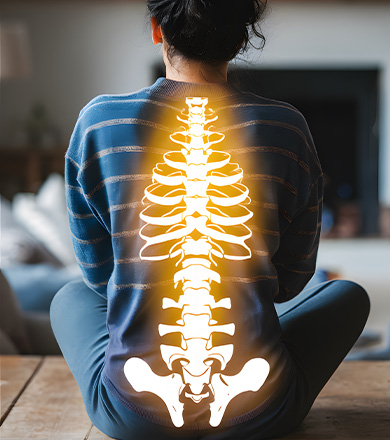Lumbar spinal stenosis (LSS) is a condition characterized by the narrowing of the spinal canal in the lower back (lumbar region). This narrowing can compress the spinal cord and nerve roots, leading to pain, numbness, and weakness in the lower extremities. The condition primarily affects older adults, as it is often a result of degenerative changes in the spine associated with aging.
Etiology
The causes of lumbar spinal stenosis can be multifactorial, including:
Degenerative Changes: The most common cause of LSS is degenerative arthritis. Over time, the intervertebral discs lose height and bulge, the facet joints enlarge due to osteoarthritis, and the ligaments, particularly the ligamentum flavum, thicken. These changes reduce the space available for the spinal cord and nerves.
Congenital Factors: Some individuals are born with a narrower spinal canal, which predisposes them to stenosis even at a younger age.
Spinal Injuries: Trauma to the spine can lead to fractures or dislocations that cause stenosis.
Herniated Discs: A herniated disc can protrude into the spinal canal, reducing space and causing compression.
Tumors: Although rare, tumors within the spinal canal can cause stenosis.
Paget's Disease: This chronic disorder can result in the abnormal enlargement and deformity of bones, including the vertebrae, leading to stenosis.
Inflammatory Conditions: Conditions like ankylosing spondylitis can lead to structural changes and stenosis.
Conservative Treatment
Initial management of lumbar spinal stenosis typically involves conservative treatments, which may include:
Medications:
Nonsteroidal Anti-Inflammatory Drugs (NSAIDs): To reduce pain and inflammation.
Analgesics: For pain relief.
Muscle Relaxants: To alleviate muscle spasms.
Epidural Steroid Injections: To reduce inflammation and pain in the affected nerve roots.
Physical Therapy: Exercises to strengthen the muscles supporting the spine, improve flexibility, and increase endurance. Stretching and aerobic exercises can also help alleviate symptoms.
Activity Modification: Avoiding activities that exacerbate symptoms and incorporating rest periods can help manage pain.
Assistive Devices: Using canes or walkers can improve mobility and reduce pain by offloading pressure from the spine.
Heat and Cold Therapy: Applying heat or cold packs can provide temporary pain relief and reduce inflammation.
Surgical Treatment
When conservative treatments fail to provide adequate relief, or if there is significant neurological impairment, surgical intervention may be necessary. Common surgical options for lumbar spinal stenosis include:
Laminectomy: The most common procedure for LSS. It involves removing the lamina (the back part of the vertebra) to create more space for the spinal cord and nerves.
Foraminotomy: This procedure enlarges the foramina (openings where nerve roots exit the spinal canal) to relieve nerve compression.
Spinal Fusion: In cases of spinal instability or severe degeneration, spinal fusion may be performed in conjunction with a laminectomy. This involves fusing two or more vertebrae together to stabilize the spine.
Minimally Invasive Surgery: Techniques such as endoscopic or microscopic surgery can be used to perform decompression with smaller incisions, resulting in shorter recovery times and less postoperative pain.
Postoperative Care
After surgery, patients typically undergo a period of rehabilitation, which may include physical therapy to restore strength and mobility. Pain management, wound care, and gradual resumption of activities are also important aspects of postoperative care.
Conclusion
Lumbar spinal stenosis is a common condition that can significantly impact quality of life. Understanding the pathology, etiology, and available treatment options is crucial for effective management. While conservative treatments can provide relief for many patients, surgical intervention may be necessary for those with severe symptoms or neurological deficits. As always, a thorough evaluation and personalized treatment plan are essential for achieving the best outcomes.





